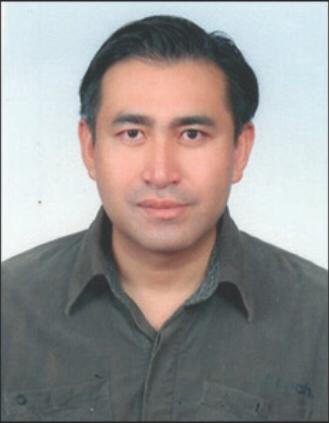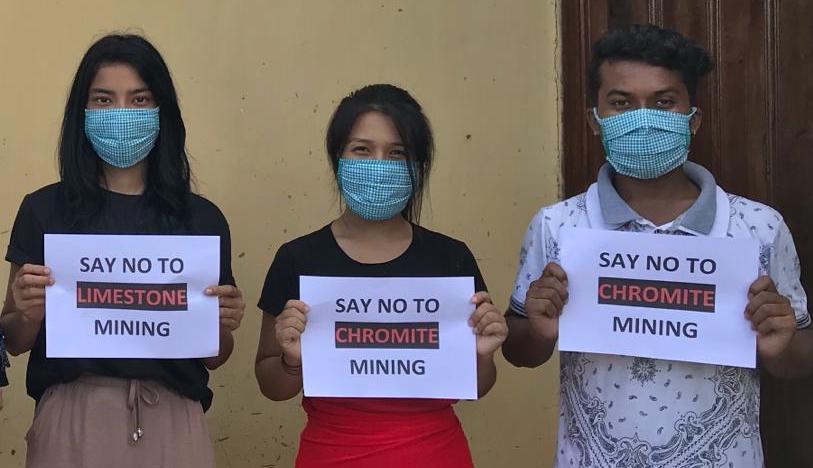The British Agents of both Manipur and Burma corroborated and deceitfully acted under the British Supreme Government’s guidance transferred Kabaw Valley from Manipur to Burma
 Maheshsana Rajkumar
Maheshsana Rajkumar

Ningthee River (Chindwin River), had strong significance in the ancient history of Manipur which is depicted on “A Map of the Burmese Empire” by Cartographer John Wyld in 1886, a folding map of Burma based on documents from the Surveyor Generals Office of India, published after the Third Anglo-Burmese War withdrawing of Ningthee R. on the map.
Manipur was known as Kassay/Kathe from the time of Maurya/Sakya King Dhaja Raja 550 BCE. Moirang is derived from word Mauriya+Ang=Mauriyang>Moirang and also Moranga of “The Glass Palace Chronicle of Burma”, with Yazagyo (Rajgriha), in Myanmar as her ancient capital. Moirang principality in the ancient period covered areas of present Yazagyo located at Kabaw Valley. Colonel G.E. Gerini in his book on “Researches on Ptolemy’s Geography of Eastern Asia”, mentioned Yazagyo as the ancient capital of Kassay (Manipur). Manipur’s ancestral boundary was the Ningthee River (meaning beautiful in Manipuri) and was known to Burmese as Khyendwen River, was the dividing marker between the kingdom of both Manipur and Burma. The name Chindwin River is an anglicized name coined by the British. The inhabitants of Manipur Meitei/Meetei people were known as Kathe Shan/Kassay Shan and Tai Moy or Kassay as referred to in Tai journal in new Shan script “Tai in the World”, bearing strong similarities with Tai Leng race of Myanmar. The kingdom of Manipur was Tainized/Shanized with other races. Kabaw Valley predominantly Shans, her possession lay with Manipur and sometimes with strong Burmese rulers who annexed and occupied the land in their ancient history.
Learned scholar Michael W. Charney acknowledged the presence of a strong culture of intellectual knowledge exchange lasting two centuries from mid 17th to 19th century in the ‘Burma-Manipur Frontier’ of a reputed literary culture known as “Chindwin Literary Culture”, existed with patronization by the kings of both Manipur and Burma. The translation work from Sanskrit to Pali texts was carried out by the learned scholars of both the courts resulting in the birth of a popular Buddhist reformation known as “Sudhamma Reformation” of the Burmese Konbaung Empire during the reign of King Bodawpaya.

Map source: John Wyld. 1886.
The distasteful transfer of Kabaw Valley on 9 January 1834, Maharaja Gambhir Singh of Manipur died of unnatural death (Heart Attack), hearing the shocking news of Kabaw Valley transfer. The British Agents of both Manipur and Burma corroborated and deceitfully acted under the British Supreme Government’s guidance transferred Kabaw Valley from Manipur to Burma. The responsible British Officers were Governor-General Lord William Bentinck, Major Henry Burney, Resident at Court of Ava and Commissioners of Manipur namely Captain F.J. Grant and Lieutenant R.B. Pemberton.
King Bagyidaw’s Ava court decision making was strongly influenced by Hluttaw (Burmese council of ministers), who pressed on the British Officials and demanded resource rich Kabaw Valley and Tenasserim. In the end, Manipur was used as bait by the British Supreme Government and transferred Kabaw Valley to Burma, and denied Burmese the claim to Tenasserim.
The British East India Company faced a severe economic crisis after the First Anglo-Burmese War 1824-26, the Bengal agency houses faced bankruptcy, and war indemnity of 1 million pounds sterling in four installments were paid by the Burmese with the last installment paid in 1833. The transfer was executed on 9 January 1834. The compensation amount of transfer of Kabaw Valley to Manipur was fixed at 500 Sicca Rupees monthly or 6000 Sicca Rupees annually with 16 Sicca Rupees valued at 1 Gold Mohur or 375 Gold Mohur annually. The transfer resulted in the great territory loss of eastern parts of Manipur up to Ningthee River, the inherent economic lifeline of the western Southeast Asian nation, and later became landlocked. The introduction of the British cartography method Manipur came in the area of South Asia of British East India Company from the year 1837.
The epithet of Gariba Niwaza was given to Pamheiba by the Mughal emperor of Delhi for not joining the confederacy of Hindu potentates of Ahom King Rudra Singh against ‘pan-islamic policy’ of the Mughal rulers. Manipur never shared boundaries with the Mughal kingdom and faced no threat to her nation. Maharaja Gariba Niwaza the great sovereign monarch of Southeast Asia brought a revolution to Manipur in respect of religion, social, cultural, and political arenas. He was also the known ruler of the Tai dynasty of Mogaung (Mong Kawng), backed by the Cacharese army and Tai kingdoms of Northwest Burma, who allied with Ava after Bayinnaung’s conquest of Shan States, became vassal of Manipur and almost conquered Toungoo Empire during the reign of last Toungoo King Maha Damma Yaza Dipati, had there been no invasion in Manipur by the Tripura king in 1740 when the Manipur army was at Ava.
King Maha Damma Yaza Dipati feared Manipuri invaders who wrote letters to the Qing Emperor of China and sought his support to crush Manipur. The bitter lesson learnt by Konbaung King Alaungpaya from Toungoo‘s experience, when all out offensive against Manipur followed by the successive Konbaung kings, took Manipur as her bitter rival and wiped out her civilization completely by mass deportations of her population to Lower Burma’s dry zone. The loss of Manipur’s Ningthee River, her ancestral boundary is reflected on John Wyld’s map which at one time indicated a glorious nation. Manipur went through gradual decadence and could never recover her economy back and with free India her survival is dependent on New Delhi’s funding till today.

(Maheshsana Rajkumar is the co-author of the book “The Political Monument: Footfalls of Manipur History”)
Advertisement | KRC Foundation

To know more, visit: https://bit.ly/3KVFnRq





